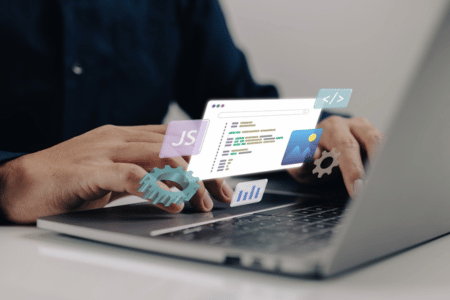In the constantly evolving landscape of technology, the question “Do APIs cost money?” is being asked more frequently. As companies explore ways to monetize their services, some have turned to charging for API (Application Programming Interface) access. So, what’s the rationale behind this, and why are businesses willing to pay? Let’s delve into the intricacies of charging for API access.
Table of Contents
- The Case for Charging for API Access
- The Big Players and Their Motives
- Return on Investment: How Companies Make Money with APIs
- Alternatives to Charging for APIs
- How to Determine API Pricing
- Real-World Examples: API Pricing Models of Prominent Companies
- Working with Oyova to Make Money from an API
The Case for Charging for API Access
When exploring why APIs cost money, it’s crucial to understand that setting a price for API access is not new. As the era of SaaS (Software as a Service) unfolded, it became clear that software integration capabilities often superseded the standalone services.
APIs, thus, turned into a bustling virtual marketplace for exchanging utilities and tools.
Recognizing the potential of automation, some forward-thinking companies pivoted to business models emphasizing API access. By doing so, they catered to a clientele composed of businesses seeking efficiency-enhancing, relevant solutions.
Let’s get down to the nitty-gritty of why charging for your API access could be a strategic move: 
- Capitalizing on Your Value: Your API isn’t just a toolIt’s a powerhouse that provides high-quality data or services that are in demand. It’s an asset, a unique selling point that adds substantial value to your business. If leveraged correctly, it can be a game-changing monetization channel.
- Absorbing Operational Costs: Let’s face it, maintaining an API comes with its own set of costs. From development to infrastructure, security to support, the expenses add up. Charging for API access can offset these costs, making the API a sustainable entity within your business structure.
- Resource Usage Management: A cost association with API usage naturally limits the strain on your resources. If your API is particularly resource-intensive, having a pricing structure in place ensures that it’s used judiciously, safeguarding your resources from being overwhelmed by unfettered free access.
- Incentive for Further Investment: The revenue stream generated from a monetized API can be a crucial reinvestment tool. It facilitates continuous improvement and development of the API, creating a cycle of enhancement that benefits both you as a provider and the users of your API.
- A Sustainable Business Model: Companies specializing in API offerings, such as Twilio or Stripe, is a testament to how APIs can form the backbone of a successful business model.
However, the decision to charge for your API should be well-thought-out. It’s pivotal to factor in your API’s value, the operational costs involved, and how it fits into your broader business strategy. With the right approach, charging for API access could open up a new, profitable avenue for your business.
The Big Players and Their Motives
Industry titans like Microsoft, Google, and Twitter have made headlines for charging for API access. But why do some companies charge for API access? The key motivator is data. If one company can gain from another’s API (especially in terms of data), it’s only fair that the original provider benefits financially.
Simultaneously, many startup companies are capitalizing on the demand, offering APIs as standalone products. These entities fulfill the needs of the dynamic automation market. Businesses pave SaaS-like routes, and API startups construct bridges (APIs) connecting these routes, creating a robust ecosystem. However, much like toll bridges in the physical world, these digital bridges come with a cost.
Return on Investment: How Companies Make Money with APIs
So, you may be pondering how companies make money with APIs. The most common model is usage-based pricing, which underlines why APIs aren’t free.
To illustrate this, let’s take the Google Translate API as an example. Its pricing model is designed around database access per million characters. API developers are billed when they reach these limits due to user activities, which ensures that no one can profit from Google’s API without sharing the rewards, making it a case in point for why APIs cost money.
This approach isn’t just beneficial for tech giants like Google. It’s also a win-win scenario for smaller businesses.
However, there are other games in town. Companies have an array of API monetization strategies at their disposal:
Pay-as-you-go: Beyond the usage-based model, companies can implement a pay-as-you-go pricing strategy. In this model, customers are charged based on the actual usage of the API, not a set rate, enabling companies to scale their prices with the customer’s usage, which ensures that the revenue generated matches the demand. 
Tiered Pricing: Another common model is tiered pricing. Here, different levels of API access are provided at varying price points. The higher the tier, the more extensive the access, allowing companies to cater to a broader range of customer needs and budgets.
Transactional Fees: In some cases, companies charge a transaction fee for certain API calls, especially when those calls initiate a process with a clear business value. For example, payment processing APIs often charge a small fee for each transaction.
Revenue Share: Companies can also establish revenue-sharing agreements with API consumers. In these agreements, if the API is used to generate revenue – for example, through an app that uses the API to deliver a service – the company providing the API gets a portion of that revenue. This model can be particularly effective when the API enables high-value services.
Subscription Model: Besides the freemium model, companies can opt for a straight subscription model. Customers pay a recurring fee to access the API, usually monthly or annually. This model provides a steady, predictable revenue stream for the company.
There are many options for charging for an API.
Alternatives to Charging for APIs
While charging for API access can be lucrative, it’s not the only monetization model businesses can adopt. Here are some alternatives:
- Freemium Model: Under this model, the basic API functionality is offered for free, which helps attract developers to the platform. As the users’ needs increase, they can opt for premium, paid features, like higher rate limits or access to advanced services. Moreover, by drawing users to the platform, the API effectively acts as a lead magnet, potentially increasing engagement with other associated services and leading to further revenue opportunities beyond the API itself.
- API as a Value-Added Service: Instead of directly monetizing the API, companies can use it to enhance the value proposition of their existing products or services. For instance, a SaaS company could provide API access as part of its premium package, adding another layer of utility to its offering.
- Partnership Strategy: Companies can establish strategic partnerships where their APIs are used in exchange for services, resources, or exposure. This method often works well when the API enhances the partner’s service, adding value to both parties.
How to Determine API Pricing
When setting the price for API access, several factors come into play:
- Value of Data or Services: The value of the data or services accessed through the API is a significant determinant. You can charge a premium if your API provides access to unique data or high-value services.
- Cost of API Maintenance: The expenses incurred in maintaining the API, including development, documentation, support, and infrastructure, should be factored into the pricing.
- Competitor Pricing: Look at the pricing of similar APIs in the market. While you don’t necessarily have to match your competitors’ prices, understanding the market rate can inform your pricing strategy.
- Usage-Based Pricing: Another common approach is to price based on usage. For instance, you could have tiered pricing plans based on the number of API calls per month, which allows smaller users to access the API at a lower cost while ensuring that heavy users pay more.
These factors will help you decide how much to charge for API access.
Real-World Examples: API Pricing Models of Prominent Companies
It’s worth examining a few real-world examples to understand the monetization models of well-known APIs, which helps clarify why they charge for their APIs and how they do it.
- Twilio API
Twilio is known for providing APIs for SMS, Voice, and other communication services. They follow a pay-as-you-go pricing model. Customers pay for what they use without any upfront cost. The pricing varies based on the service (SMS, Voice, etc.), country, and whether the communication is inbound or outbound. This model aligns well with Twilio’s resources and the value provided, allowing small and large businesses to scale as their needs evolve. - Google Maps API

Google Maps API uses a freemium model combined with usage-based pricing. For most users, a basic version of the API is available for free up to a certain limit. Once that limit is exceeded, Google charges per API call, which varies based on the specific Maps service used (like Directions, Places, or Roads). Google’s model incentivizes developers to optimize their usage and provides revenue that supports the maintenance and improvement of the service. - IBM Watson API
IBM’s AI service, Watson, follows a tiered pricing model. The price varies based on the API functionality (like Language Translator, Text to Speech, etc.) and the number of API calls made per month. Watson’s tiered model allows companies to choose a plan that best fits their needs and budget, making advanced AI capabilities accessible to businesses of all sizes. - Stripe API
Stripe’s API for online payment processing charges a transactional fee. For each successful transaction made through the API, Stripe charges a percentage of the transaction amount plus a small fixed fee. This model aligns the cost with the value provided – the more transactions a business processes through the API, the more they pay.
These examples illustrate that there’s no one-size-fits-all approach to API monetization. The most effective pricing model depends on various factors, such as the value of the data or services provided by the API, the costs of maintaining the API, and the company’s overall business strategy.
Working with Oyova to Make Money from an API
In sum, the answer to “Do APIs cost money?” is a resounding yes, at least when the APIs offer significant value to businesses. It’s a strategic decision by companies to monetize their data, with charges often directly proportional to usage.
Are you interested in integrating an API into your business plan? At Oyova, our web development professionals are ready to assist you in creating and charging for an API. We’ll help your company maximize the benefits of APIs, website development, and web app development. Contact us today to take your business to the next level.
Our Awards













